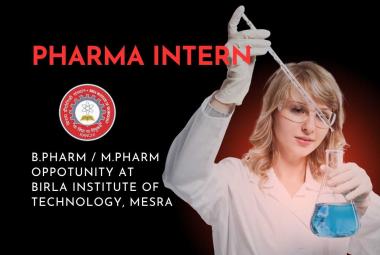 About Author:
About Author:
Renuka G. Hade
Quality Assurance Department, Wockhardt Limited,
Aurangabad (431210), M.S.
renukahade@gmail.com
Abstract:
Aripiprazole is a new antipsychotic agent. There is presently no evidence to suggest that it is more effective than existing antipsychotics in the treatment of schizophrenia but it offers prescribers another treatment option for this illness. Its efficacy in treatment-resistant schizophrenia is not established; for these patients clozapine is generally considered the drug of choice.
Aripiprazole is a widely used antipsychotic drug supplied in various dosage forms of Aripiprazole Tablets, Aripiprazole Orodispersible tablets and Aripiprazole Oral solution. These formulations are approved by United States Food and Drug Administartion (USFDA) and European Medicinal Agency (EMA) under the brand name Abilify®, manufactured by Otsuka Pharmaceuticals Limited.1
Based upon the current market demands of the Aripiprazole worldwide, a complete review of the non-clinical (Animal) safety (toxicological studies), is of considerable importance.
[adsense:336x280:8701650588]
Reference ID: PHARMATUTOR-ART-1962
Introduction:
Schizophrenia is one of the most common mental diseases (affecting around 1% of the population) with a biological background, diverse clinical course, and not entirely clear origin.5 It is a chronic psychiatric illness with two major types of symptoms- positive or psychotic symptoms, such as hallucinations and delusions, and negative or deficit symptoms, such as amotivation, apathy, and asociality. 3
Aripiprazole was the first in a new class of atypical antipsychotic drugs known as dopamine system stabilizers. Aripiprazole is a partial dopamine agonist, in contrast to other antipsychotic agents that are full dopamine antagonists, and, thus, the drug has a distinct mechanism of action.9
The general information of Aripiprazole is given below. 2
Compendial name: Aripiprazole
Chemical name(s):
7-[4-[4-(2,3-dichlorophenyl)-1-piperazinyl]butoxy]-3, 4-dihydrocarbostyril
Structure:

Molecular formula: C23H27Cl2N3O2
Molecular weight: 448.39
CAS registry Number: 129722-12-9
Mode of action: The mechanism of action of Aripiprazole, as well as other drugs having efficacy in schizophrenia, is unknown.2,9
However, it has been proposed that the efficacy of Aripiprazole is mediated through a combination of partial agonist activity at dopamine D2 and serotonin 5HT1A receptors and antagonist activity at serotonin 5HT2A receptors. Aripiprazole exhibited antagonist properties in animal models of dopaminergic hyperactivity and agonist properties in animal models of dopaminergic hypoactivity. 23, 11, 2
It has been proposed that Aripiprazole's efficacy in schizophrenia and Bipolar I Disorder is mediated through a combination of partial agonism at dopamine D2 and serotonin 5HT1A receptors and antagonism of serotonin 5HT2A receptors. Aripiprazole exhibited antagonist properties in animal models of dopaminergic hyperactivity and agonist properties in animal models of dopaminergic hypoactivity. Aripiprazole exhibited high binding affinity in vitro for dopamine D2 and D3, serotonin 5HT1A and 5HT2A receptors and moderate affinity for dopamine D4, serotonin 5HT2C and 5HT7, alpha-1 adrenergic and histamine H1 receptors. Aripiprazole also exhibited moderate binding affinity for the serotonin reuptake site and no appreciable affinity for muscarinic receptors. 1, 2, 12
Safety Concern/ Toxicology:
Animal Studies: The safety of aripiprazole has been evaluated in single- and repeat-dose oral toxicity studies in rats and monkeys, a battery of in vitro and in vivo genetic toxicity studies, carcinogenicity studies in mice and rats, reproductive and developmental toxicity studies in rats and rabbits, local tolerance studies in rabbits, antigenicity studies in guinea pigs, studies of serum hormone levels in mice and rats, and physical dependence and abuse potential studies in rats and monkeys. Dose rangefinding studies were conducted in the appropriate species to assist in dose selection for definitive repeat-dose toxicity, oral micronucleus, reproductive toxicity, and carcinogenicity studies. 7
Acute Toxicity:
The Lethal Dose (LD50) of Aripiprazole in rats is tabulated below: 8
|
S. N. |
Route |
LD50 |
|
1 |
Oral (rat) |
953 mg/kg |
|
2 |
Oral (rat, female) |
705 mg/kg |
In rats,the median lethal dose after oral administration of aripiprazole was approximately in the range of 950 - 700 mg/kg. Drug-related clinical findings preceding death included principally: decreased spontaneous motor activity, convulsions, ataxia, tremors, and catalepsy. After intravenous administration, no death and no clinical findings were noted up to the highest feasible dose of 2 mg/kg.
In monkeys,the median lethal dose after oral administration of aripiprazole was greater than 2000 mg/kg. Severe drug-related clinical effects were noted primarily during week 1 and included: impaired motor activity, hypo-reactivity to external stimuli, catalepsy, tremors and prone and/or lateral position.
All clinical signs were considered pharmacologically mediated and resolved on or before day 11 with the exception of tremors and impaired motor activity in one high-dose female that persisted through the end of the study. No gross pathologic changes were observed in the 2000 mg/kg animals necropsied. After intravenous administration, there were no aripiprazole- related findings at any dose up to the highest feasible dose of 1 mg/kg. 7
[adsense:468x15:2204050025]
Chronic Toxicity:
Aripiprazole did not cause any life- threatening toxicity when administered to rats at doses up to 60 mg/kg/day for 6 months or to monkeys at doses up to 75 mg/kg/day for 9 months. Dose-limiting CNS related clinical signs and the majority of morphologic tissue changes were considered to be a consequence of exaggerated pharmacology or drug-related perturbations of serum prolactin levels.
In rats, the main changes included dose- related pulmonary histiocytosis, adrenocortical hypertrophy and increased adrenal and ovarian lipofuscin pigments, and associated adrenocortical cell loss after chronic treatment at high doses.
In monkeys, gallsand and gallstones and minimal focal hepatolithiasis were observed at high doses as a consequence of concentration and precipitation of sulfate conjugates of hydroxy metabolites of aripiprazole in the terminal biliary tree and gallbladder. No other target organs of toxicity were identified in the monkey. 7
Bilateral retinal degeneration was observed in albino rats given oral aripiprazole for 6 months or two years at exposure of 6-13 times the clinical exposure at the MRHD (maximum recommended human dose). The exposure at the NOEL dose was 3 times that at the MRHD. A subsequent 18-month study reported this finding in albino but not pigmented rats, possibly due to lack of photoprotective ocular melanin in the albino rats, although it is unknown whether pigmentation prevented or merely delayed retinal degeneration in the pigmented rats. 2
In repeat-dose studies in juvenile rats and dogs, the toxicity profile of aripiprazole was comparable to that observed in adult animals, and there was no evidence of neurotoxicity or adverse effects on development.1
Toxicologically significant effects were observed only at doses or exposures that were sufficiently in excess of the maximum human dose or exposure, indicating that these effects were limited or of no relevance to clinical use.1
Aripiprazole produced retinal degeneration in rats in a 26-week chronic toxicity study at a dose of 60 mg/kg and in a 2 year carcinogenicity study at doses of 40 and 60 mg/kg. The 40 and 60 mg/kg doses are 13 and 19 times the maximum recommended human dose on a mg/m2 basis.6, 10
Reproduction Toxicity:
Aripiprazole had no effect on fertility in female rats treated orally with 2, 6 and 20 mg/kg/day for 2 weeks prior to mating through gestation day 7. Drug-related effects (persistent dioestrus and increased mating time pre-implantation losses, and corpora lutea) observed at all doses were considered the result of perturbed oestrous cyclicity secondary to drug-mediated hyperprolactinaemia.
Aripiprazole had no effect on fertility in male rats treated with PO doses of 20, 40 and 60 mg/kg/day (6, 12 and 18 times the MRHD based on mg/m2) for 9 weeks prior to mating through mating. Disturbances of spermatogenesis were seen at 60 mg/kg/day and prostatic atrophy was seen at 40 and 60 mg/kg/day.2
NOW YOU CAN ALSO PUBLISH YOUR ARTICLE ONLINE.
SUBMIT YOUR ARTICLE/PROJECT AT articles@pharmatutor.org
Subscribe to Pharmatutor Alerts by Email
FIND OUT MORE ARTICLES AT OUR DATABASE
Embryo-Foetal Development:
Pregnant rats were treated with oral doses of 3, 10 and 30 mg/kg/day of aripiprazole during the period of organogenesis. At 30 mg/kg, treatment was associated with slightly prolonged gestation, and a slight delay in foetal development as evidenced by decreased foetal weight, undescended testes, and delayed skeletal ossification. 2, 6
Pregnant rabbits were treated with oral doses of 10, 30 and 100 mg/kg/day (2, 3 and 11 times human exposure at MRHD based on AUC and 8, 24 and 81 times the MRHD based on mg/m2) of aripiprazole during the period of organogenesis. Decreased maternal food consumption, and increased abortions were seen at 100 mg/kg. Treatment caused increased foetal mortality (100 mg/kg), decreased foetal weight (30 mg and 100 mg/kg), increased incidence of a skeletal abnormality (fused sternebrae at 100 mg/kg) and minor skeletal variations (100 mg/kg). 2, 6
Rats were treated with oral doses of 3, 10 and 30 mg/kg/day (1, 3 and 9 times the MRHD on mg/m2 basis) of aripiprazole from late gestation through weaning. At 30 mg/kg, maternal toxicity, slightly prolonged gestation, an increase in stillbirths, poor postnatal care/nursing, and decreases in pup weight (persisting into adulthood) and survival were seen.2
Prenatal and postnatal development:
Congenital anomalies have been reported; however, a causal relationship with aripiprazole could not be established. In animal studies aripiprazole demonstrated developmental toxicity, including possible teratogenic effects, in rats and rabbits. 2
Juvenile Toxicity Studies:
In repeat-dose studies in juvenile rats and dogs, the toxicity profile of aripiprazole was comparable to that observed in adult animals, and there was no evidence of neurotoxicity or adverse effects on development. 1
Genotoxic Potential:
Based on results of a full range of standard genotoxicity tests, aripiprazole was considered non-genotoxic. Aripiprazole did not impair fertility in reproductive toxicity studies. Developmental toxicity, including dose-dependent delayed foetal ossification and possible teratogenic effects were observed in rats at doses resulting in sub- therapeutic exposures (based on AUC) and in rabbits at doses resulting in exposures 3 and 11 times the mean steady-state AUC at the maximum recommended clinical dose. Maternal toxicity occurred at doses similar to those eliciting developmental toxicity. 1
Animal studies have shown evidence developmental toxicity, including possible teratogenicity, and an increase in stillbirths.4,9
Aripiprazole was tested in a standard range of assays for gene mutation, chromosomal damage, and DNA damage and repair. Aripiprazole was non-genotoxic in the in vitro bacterial reverse-mutation assay, the in vitro forward gene mutation assay in mouse lymphoma cells, in vitro bacterial DNA repair assay, and the unscheduled DNA synthesis assay in rat hepatocytes. However, aripiprazole and its minor metabolite 2,3- DCPP were clastogenic in the in vitro chromosomal aberration assay in Chinese hamster lung (CHL) cells in both the presence and absence of metabolic activation. A positive response for aripiprazole in 1 of 6 in vivo mouse micronucleus tests was attributed to drug-induced hypothermia. 2, 6
Carcinogenic Potential:
Lifetime carcinogenicity studies were conducted in ICR mice and in Sprague- Dawley (SD) and Fischer (F344) rats. Aripiprazole was administered for 2 years in the diet at doses of 1, 3, 10 and 30 mg/kg/day to ICR mice and 1, 3 and 10 mg/kg/day to F344 rats (0.2 to 5 and 0.3 to 3 times the MRHD based on mg/m2, respectively). SD rats were dosed orally by gavage for 2 years at 10, 20, 40 and 60 mg/kg/day (3 to 18 times the MRHD based on mg/m2). There was no evidence of tumorigenesis in male mice or rats. In female mice, the incidences of pituitary gland adenomas and mammary gland adenocarcinomas and adenoacanthomas were increased at dietary doses of 3 to 30 mg/kg/day (0.1 to 0.9 times MRHD based on AUC and 0.5 to 5 times the MRHD based on mg/m2). In female rats, the incidence of mammary gland fibroadenomas was increased at a dietary dose of 10 mg/kg/day (< 0.1 times MRHD based on AUC and 3 times the MRHD based on mg/m2); and the incidences of adrenocortical carcinomas and combined adrenocortical adenomas/ carcinomas were increased at an oral gavage dose of 60 mg/kg/day (10 times the MRHD based on AUC and 18 times MRHD based on mg/m2). In male rats, the incidence of benign and combined benign/malignant phaeochromocytomas were also increased at an oral gavage dose of 60 mg/kg/day (10 times the MRHD based on AUC and 18 times the MRHD based on mg/m2). 2 6 7 10
In order to reach a maximum tolerated dose, another oral carcinogenicity study was conducted using gavage administration to Sprague Dawley rats at doses of 10, 20, 40 or 60 mg/kg/day for 104 weeks.
There was an increased incidence of adrenocortical tumors (adenomas and carcinomas) at 60 mg/kg/day in females only. Drug-related non-neoplastic findings at 40 and 60 mg/kg/day included increased incidences and/or severities of bilateral retinal degeneration attributed to the greater lifetime exposure to light due to a higher survival rate in these groups.
The highest doses tested in carcinogenicity studies in mice and rats resulted in exposures (AUC0-24 h) that were equivalent (mice) and up to approximately 14 times greater than (rats) exposure at the maximum recommended dose in humans (30 mg). The maximum non-carcinogenic dietary doses of 1 mg/kg/day (mice) and 3 mg/kg/day (rats) resulted in sub-therapeutic exposures (x25 and x300 lower), whereas 12- and 10-fold multiples of exposure was achieved at the maximum non-carcinogenic dose (60 and 40 mg/kg) in male and female rats, respectively, in the oral carcinogenicity study.
The main proposed mechanism is related to cytotoxicity due to increased oxidative stress induced by aripiprazole, rather than increased adrenocortical hormone production, as this has been considered as minor in the treatment period. 7
Proliferative changes in the pituitary and mammary gland of rodents have been observed following chronic administration of other antipsychotic agents and are considered prolactin-mediated. Serum prolactin was not measured in the aripiprazole carcinogenicity studies.
Hyperprolactinaemia was observed in female mice in a 13-week dietary study at doses associated with mammary gland and pituitary tumours, but not in female rats in 4- and 13-week dietary studies at doses associated with mammary gland tumours. Hyperprolactinaemia was observed in female rats after 5 and 13 weeks of oral administration at doses up to that associated with adrenocortical tumours, but serum prolactin was decreased at this dose in male rats. The relationship between tumourigenic findings with aripiprazole and prolactin is unclear and the relevance for human risk of prolactin-mediated endocrine tumours is unknown. The adrenocortical response in female rats is considered a consequence of increased adrenocortical cell proliferation secondary to chronic drug-related adrenocortical cytotoxicity; the no-effect exposure (plasma AUC) was about 7 fold clinical exposure at the MRHD. 2
Local Tolerance:
Aripiprazole was non-irritating to rabbit skin and was considered non-irritating to the rabbit eye using the Draize numerical evaluation method. 7
Special Toxicity Studies 7 Antigenicity:
Aripiprazole was evaluated for its antigenic potential in groups of 10 male Hartley guinea pigs sensitized with doses of 0.5 or 5 mg/kg of aripiprazole in Freund’s complete adjuvant (FCA). No antigenic potential in guinea pigs was found.
Dependence:
The physical dependence and abuse potential of aripiprazole were evaluated in three pivotal studies: a primary physical dependence study in rats, a primary physical dependence study in monkeys, and a selfadministration substitution test in monkeys. The obtained results suggest that aripiprazole does not have significant abuse liability.
Metabolites:
A single-dose intravenous toxicity study of OPC-14857 in rats showed at 50 and 100 mg/kg, clinical signs of poor general condition partially reversible on day 2, with evidence of intravascular haemolysis. In the single-dose intravenous toxicity study of OPC-3373 in rats, there were no drug- related effects. A bacterial reverse-mutation test of DCPP was negative.
Photo-safety:
As aripiprazole binds to melanin-containing tissues (tissue distribution studies), in vitro (photostability, 3T3 NRU PT) and in silico studies were performed and did not indicate a risk to patients.
Conclusion:
The review of the toxicological, pharmacodynamic and pharmacokinetics non clinical literatures reveals that the extensive data for Aripiprazole in various animal models are available and it can be concluded that this drug has an excellent safety profile and Aripiprazole can be a drug of choice for Schizophrenia and other antipsychotic disorders.
References:
1. Summary of product characteristics of Abilify® Tablets, Otsuka Pharmaceuticals (UK) Limited, Rev. Date: 15/02/2013.
2. Product Information, Abilify® (Aripiprazole tablets and orally disintegrating tablets), Bristol-Myers Squibb Australia Pty. Ltd., 556 Princes Highway, Noble Park, Victoria 3174, Australia, Date of Revision. June 12, 2012
3. Cindy P. Lawler et al., Interactions of the Novel Antipsychotic Aripiprazole (OPC-14597) with Dopamine and Serotonin Receptor Subtypes Neuropsychopharmacology, 1999– VOL.20, NO 6, 612-627.
4. Aripiprazole (Abilify) for schizophrenia, Rational Assessment of Drugs and research, Prepared March 2004.
5. Piotr Ratajczak et al., Influence of aripiprazole and olanzapine on behavioral dysfunctions of adolescent rats exposed to stress in perinatal period Pharmacological reports, 2013, 65, 30-43.
6. Pharmacology review(s): Centre for Drug Evaluation and Research Application Number 21-436.
7. Scientific Discussion: Abilify®, EMEA 2005, 1-29.
8. Material Safety Data Sheet: Aripiprazole, Santa Cruz Biotechnology Inc., California, June 7, 2008.
9. MD Consult: Aripiprazole, Rev. date 25 November 2009
10. Highlights of Prescribing Information, Abilify Maintena™ (aripiprazole), Otsuka America Pharmaceutical, Inc. 02/2013.
11. Joshua A lile et al., Aripiprazole Attenuates the Discriminative- Stimulus and Subject-Rated Effects of D-Amphetamine in Humans Neuropsychopharmacology (2005) 30, 2103–2114.
12. Gunnar Sorensen et al., Aripiprazole blocks acute self-administration of cocaine and is not self-administered in mice Psychopharmacology (2008) 199:37– 46.
NOW YOU CAN ALSO PUBLISH YOUR ARTICLE ONLINE.
SUBMIT YOUR ARTICLE/PROJECT AT articles@pharmatutor.org
Subscribe to Pharmatutor Alerts by Email
FIND OUT MORE ARTICLES AT OUR DATABASE









